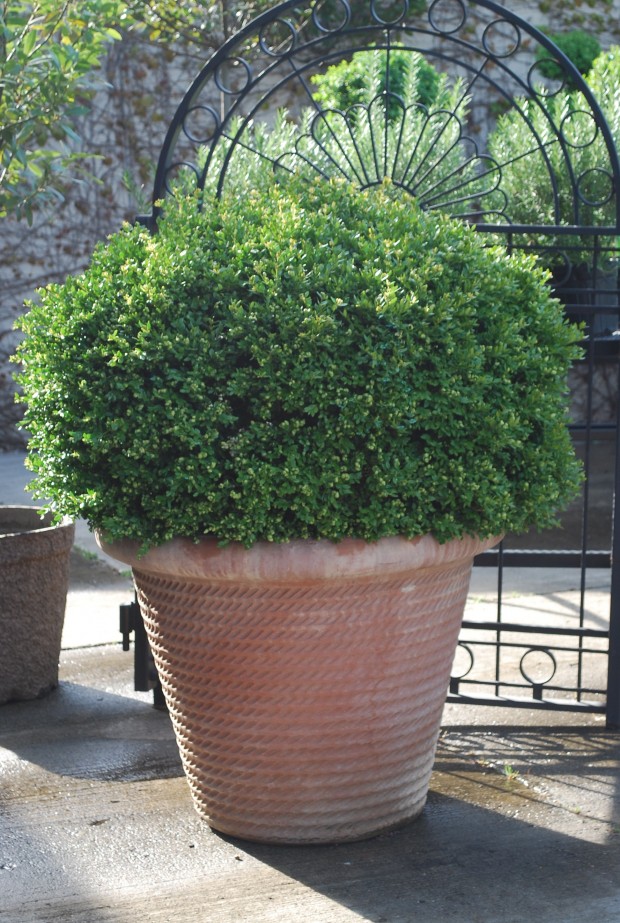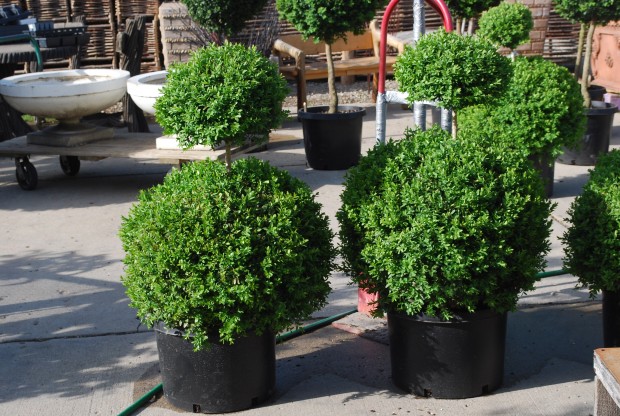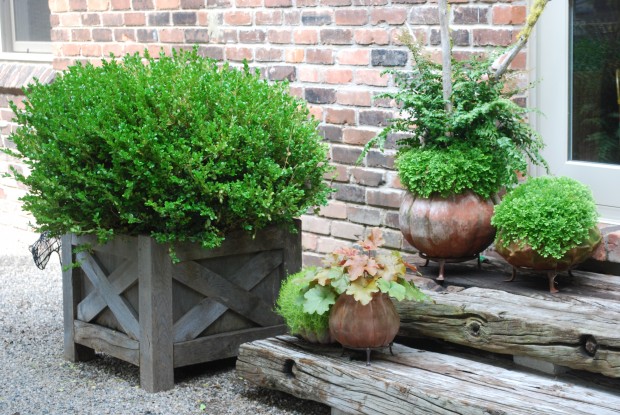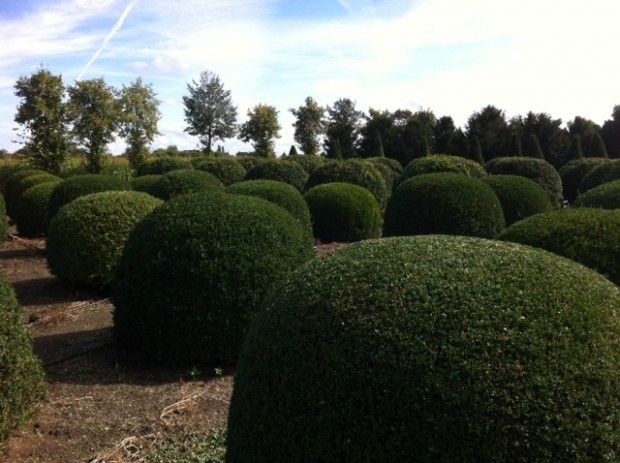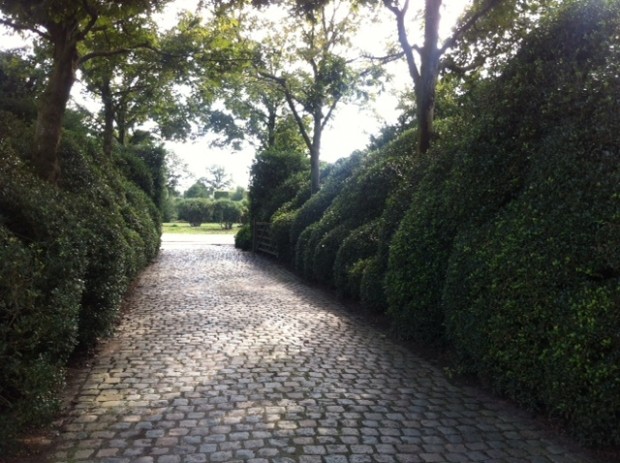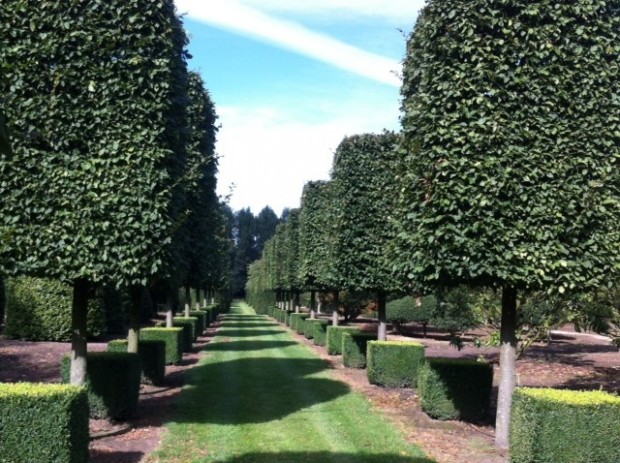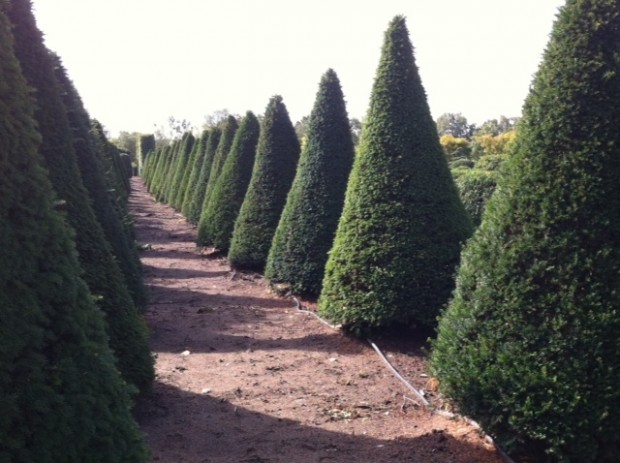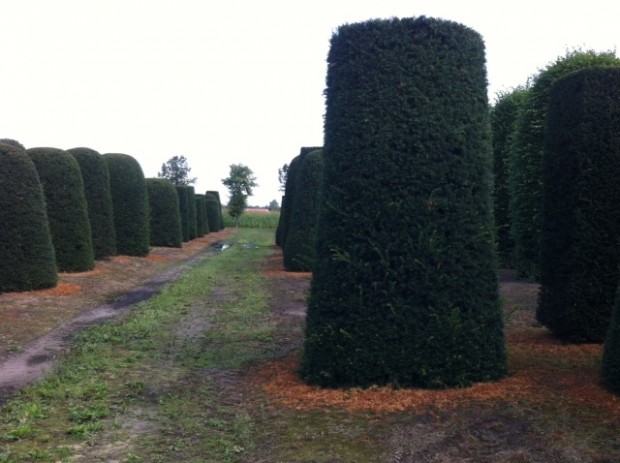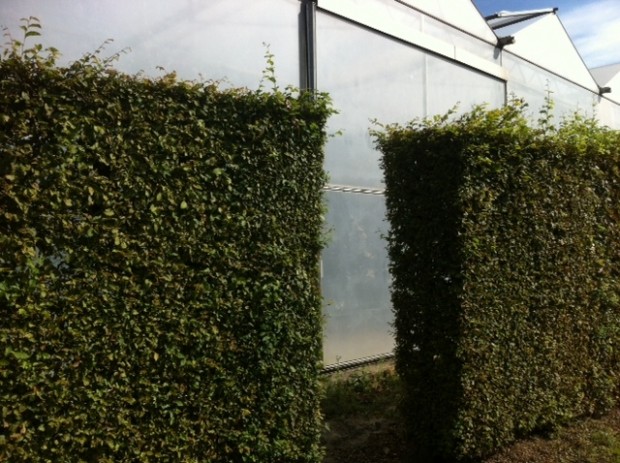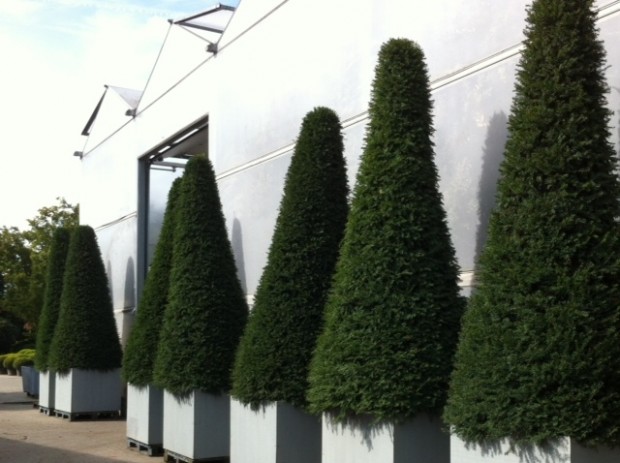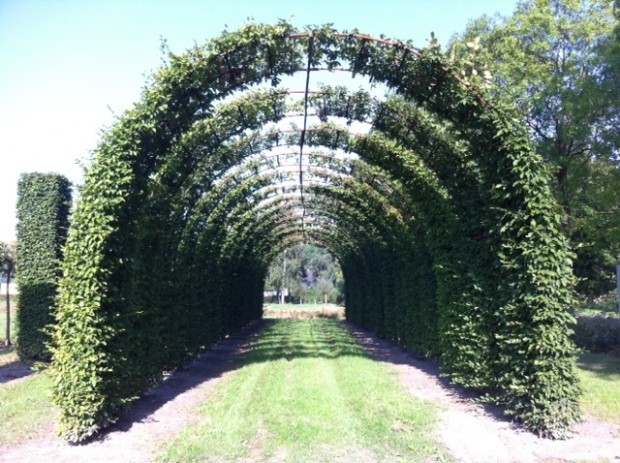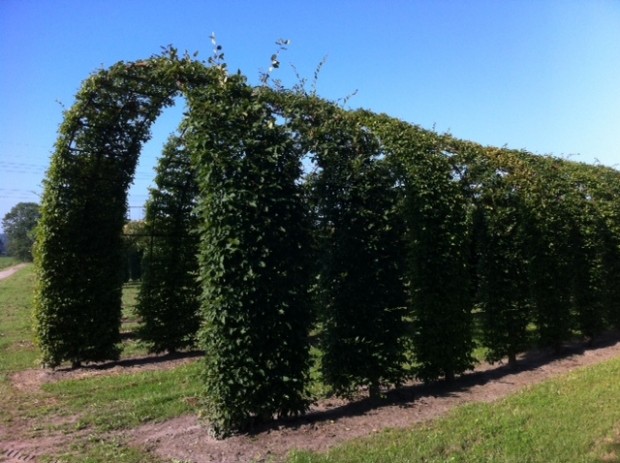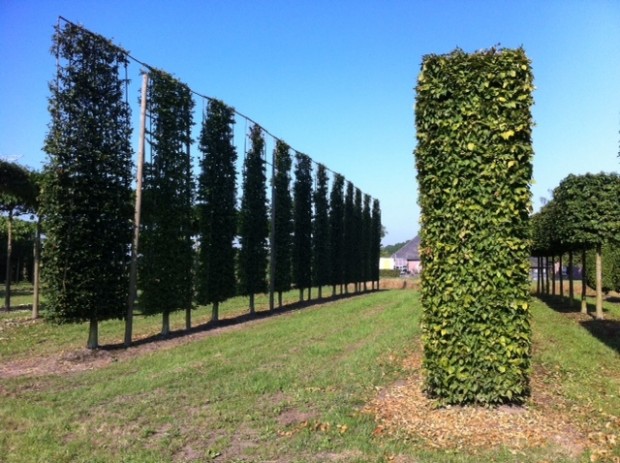Concerning my schematic plan from yesterday-my clients one comment was that I needed to add 100 boxwood. All of said 100 boxwood will be in pots. The placement and configuration of 100 pots of boxwood every spring will be the first work of their gardening season. They will haul them out of storage on a huge dolly (which they have already purchased), and discuss and decide where to place them. Boxwood in all different sizes, some of which are topiary plants with distinctive forms, in a collection of gorgeous pots. They are both adamant, and thrilled about the idea of 100 boxwood in pots. Far be it for me to deter their enthusiasm. I did amend the schematic plan with a lot of green dots-although I think all of my dots only add up to 72. I have no doubt they will be able to place their 100 pots-and have a good bit of fun doing it.
They already own a pair of these handmade French terra cotta pots planted with these boxwood. The boxwood-buxus microphylla-was 52 inches in diameter when they acquired them. They have been in these pots for 5 years. I am not sure how many other boxwood they own, but they do have a substantial collection of plain handmade Italian terra cotta pots.
I will admit to a love for boxwood. This plant speaks to no end of beautifully designed landscapes world wide. This broadleafed evergreen graces landscapes all over this planet. I love them pruned, wild, hedged, and in pots. In my zone, they provide great shape, form, and color-year round.
Growers all across the US grow boxwood in every form imaginable. They are available 12 inches tall. They are available 36 inches tall. They are grown by some growers as a uniform crop. Other growers grow them on, and trim them into spectacularly beautiful shapes.
Clients who indicate they need to have 100 boxwood planted in pots are clients of an unusual sort. These are clients for whom the garden is all about romance. What does their request mean to me? A really good day. And a lot of thought about what a garden means. Long after the end of the business day today, I am considering planting all of my pots next year with boxwood. Though I am unlikely to follow suit, their committment to such an extraordinary level of romance has me thinking. The story of a landscape dramatically colored by romance-love this.

